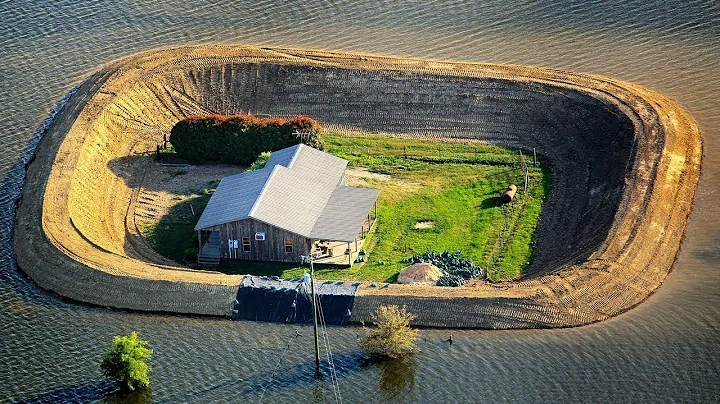Serie A is one of the five major football leagues, but there are not many stadiums owned by the club itself. Having missed the wave of new stadium developments in the 1990s and early 2000s, Italy's stadiums are now somewhat dilapidated. Nevertheless, the Serie A stadiums still leave us with many good memories, let's take a look at them again...
Atalanta-Italian Arena (capacity: 26,562 people, about 8,000 seats)

Italy Arena (Italian: Stadio Atleti Azzurri d&39; Italia) is a football stadium located in Bergamo, Italy. The stadium was completed on November 1, 1928 and officially opened on December 23. Its original name was Mario Brumana Stadium, which can accommodate 12,000 spectators. Over the years, with the increase of seats on both sides and the roof of the main stand, the Italian Arena gradually expanded. The Italian Athletic Stadium has been aging for many years and is regarded by many as outdated and not up to the standard of the Serie A stadium. Therefore, in the past decade, Atlanta has researched several options to build a new modern stadium. At first, they planned to build a brand new stadium on the outskirts of the city, but they have not been able to achieve it. In 2017, Atlanta purchased the Italian Athletic Stadium from Bergamo and is now planning to rebuild the stadium on a large scale. The plan includes the construction of two new grandstand roofs and the renovation of other grandstands to reach a capacity of 24,000 seats. They hope to complete it in 2020.
Verona-Marco Antonio Bentegodi Stadium (Capacity: 42,160 people)

Marco Antonio Bentegodi Stadium (Italian: Stadio Marc&39; Antonio Bentegodi) is located in Veneto, Italy The football stadium in Verona in the Greater Region, referred to as the Bentgeti Stadium, was completed on December 15, 1963 and rebuilt in 1990. The stadium is owned by the City of Verona. The stadium was initially bare without a roof and consisted of only two floors. The roof and third floor were expanded due to the needs of the 1990 World Cup. During the World Cup, the stadium hosted three group matches and a round of 16 knockout. Until 1986, the stadium was still used by Verona, but after they were promoted to Serie A, Chievo also began to rent the stadium. Since the beginning of 2000, the city government’s construction plan stated that it would start improving the ground floor of the stadium, but these projects have not been completed until now, and the ground floor has been closed since then.
Bologna-Dallara Stadium (capacity: 38,279 people)

Dallara Stadium (Italian: Stadio Renato Dall&39; Ara) is a multi-purpose stadium located in Bologna, Italy, built in the mid-1920s and in 1927 Officially opened on May 29. This stadium was originally called StadioLittoriale and can hold 50,100 spectators. After the war, the stadium was renamed Comunale Stadium, and was finally renamed Renato Dall&39;Ara Stadium in 1983 to commemorate a former president of the club. In 2016, the club proposed a plan to rebuild the stadium on a large scale. This redevelopment will include the reconstruction of the two corners behind the goal, the elimination of the track and field around the stadium, moving the stands closer to the stadium, removing most of the stadium’s barbed wire, but leaving the historical part intact, and covering the entire stadium with a roof. Part of the roof will be It is transparent so that the historic marathon tower can still be seen from inside the stadium. The redevelopment will reduce the seat capacity to slightly less than 24,000 seats, and the cost of the entire plan is about 60-80 million pounds. But the club also said that the final completed projects and plans will be different.
Sassuolo -Mapei Tricolor City Stadium (capacity: 20,084 people)

Mapei . Tricolor City Stadium is located in Sassuolo, Italy. It was called Giglio Stadium in the early days and was the first in Italy.A club has a modern stadium. It was built in 1994 and officially opened on April 15, 1995. The stadium underwent minor renovations in 2012 and was renamed as Tricolor City Stadium. In 2013, Sassuolo Football Club, which had just been promoted to Serie A, announced that they had reached an agreement to use the Tricolor City Stadium as their home stadium for the next two seasons. Sassuolo therefore decided to rename the stadium to Mapei Stadium-the city of three colors.
Udinese-Dacia Athletic Stadium (capacity: 25,132 people)

Dassia Athletic Stadium is a multi-purpose stadium located in Udine, Italy, but it is more well known as its predecessor-Friley Stadium. It was built in 1971 and opened on September 26, 1976, officially replacing the old Stadio Moretti, the old home stadium before Udinese. This stadium was selected as one of the venues for the 2000 Olympic Games. Because of the large-scale renovation of the 1990 World Cup, the stadium capacity was reduced from a maximum of 41,652 to 36,000. During the World Cup, it held three first round group matches. But in the next 20 years, the condition of the stadium slowly deteriorated. After the club took measures, the capacity dropped to about 30,000. Even so, fans rarely filled it.
Therefore, in the summer of 2012, Udinese proposed a plan to transform the Friuli Stadium into a modern stadium with a capacity of 25,000 people. These plans include the demolition of the athletics track and the construction of three new rectangular stands. The proposal passed the planning permission of the municipal government in 2013, and construction began in the north grandstand in the summer of 2013. The stadium was completed in early 2016. At the same time, the stadium was renamed Dacia Arena according to the sponsorship agreement of the stadium's title.
Dacia Arena is one of the few stadiums in Italy owned by the club.
Torino-Torino Olympic Stadium (capacity: 25,300 people)

Torino Olympic Stadium (Italian: Stadio Olimpico di Torino) is a multifunctional stadium in Turin, Italy. Formerly known as the Comunale Stadium, it was built in the 1930s and was the main venue for the Littoria Games (organized by the Fascist Party) and the World Student Games. It officially opened on May 13, 1933, and was originally named after the fascist leader Benito Mussolini. After the war, the stadium was renamed Komuna Stadium. Turin only used this stadium as its home stadium in 1958. Due to the 1990 World Cup, the Turin Club decided to build a new stadium. In 1990, both Juventus and Turin moved to the Alp Stadium. Because it was selected as the venue for the opening and closing ceremonies of the 2006 Winter Olympics, the stadium underwent a major renovation and installed a new roof. The rebuilt stadium opened in November 2005. Dissatisfied with the conditions of the too large Alp Stadium, Turin decided to use the stadium now called Torino Olympic Stadium as their home stadium.
Benevento-Ciro Vigorito Stadium (capacity: 12,847 people)

Ciro . Vigorito Stadium is located in Benevento, Campania, Italy. The Tadio San Colombo Stadium officially opened on September 9, 1979. The stadium can accommodate 25,000 spectators at first, but over the years, due to safety reasons, the stadium capacity has been reduced, first to 18,500 people, and in recent years it has been reduced to about 12,000 people, so the stadium’s north stand Also stopped using. In 2010, after the death of club director Ciro Vigorito, the stadium was renamed Stadio Ciro Vigorito. In 2017, after Benevento was promoted to Serie A, the stadium was upgraded, aiming to increase the capacity to more than 17,000 people again.
Sampdoria , Genoa-Luigi Ferraris Stadium (Capacity: 36,599 people)

Luigi Ferraris Stadium (Italian: Stadio Comunale Luigi Ferraris) is a multi-purpose stadium located in Genoa, Italy. It was built in 1910 when the Genoese sociologist Musso Piantelli came up with the idea of using the ground inside the racetrack as a football field. His proposal was accepted, and the stadium officially opened on January 22, 1911. The stadium initially had only one wooden stand, but it quickly expanded to approximately 30,000 seats in the 1920s and 1930s. In 1933, it was changed to its current name to commemorate the former captain of Genoa, Luigi Ferraris. Until 1946, this stadium has been the exclusive use of Genoa, but when Sampdoria was established that year, it requested the common use of this stadium, and Genoa accepted it. As the World Cup Stadium was almost completely rebuilt in 1990, the characteristic new stadium designed by architect Victoria Gregoriti was started in 1987 and completed in 1989. At that time, in order to allow Genoa and Sampdoria to continue to play on the court, the reconstruction project has been slowly carried out. In the past ten years, the stadium has only undergone minor renovations, and its stadium conditions are slowly deteriorating. For years, Genoa and Sampdoria have been considering either rebuilding the Luigi Ferraris Stadium or building a brand new stadium. However, no specific plan has yet been produced.
Cagliari-Novo Stadium (capacity: 21,000 people)

New (temporary) stadium-Sardegna Arena (Sardegna Arena) is a temporary stadium built in the parking area next to the Santa Elia Stadium. It only took four months to complete the construction and can accommodate more than 16,000 people. The club’s original home stadium, Santa Elia Stadium, was demolished and rebuilt on the original site. During the construction of the new stadium, the team's home games will be held in the Sardinian Arena. The new stadium was originally expected to be completed in 2020 as a gift for the club’s centennial celebration, but it was postponed due to the epidemic.
The new stadium, Cagliarinovo Stadium, will replace the existing Sant’Elia Stadium. Since the millennium, Cagliari has been seeking to build a new stadium to replace the dilapidated Santa Elia Stadium. They first proposed to build a full-seat stadium with a capacity of 23,500 people near the Cagliari Elmas Airport in the north of the city, which they called the Cagliari Arena. However, as the plan was resisted by the local aviation authorities and progress was slow, they ran out of anger and moved to Stadio Is Arenas, a temporary stadium in nearby Quartu, and vowed not to return to Cagliari. However, a few months later, their plan still failed the government's project review, and they eventually moved back to Santa Elia and made some minor renovations to the stadium. But in the end it was decided to demolish St. Elia and build a brand new stadium on the site.

The new stadium will have 21,000 seats and can be expanded to 24,000 seats. The stadium cost is $55 million. The club will seek a title sponsor for the new stadium to solve part of the funding problem.
(end of the first part)
my home team Serie A I want to make headlines Understand the ball game











